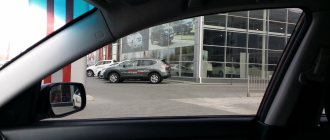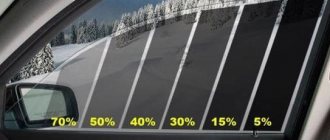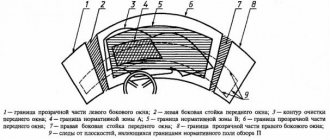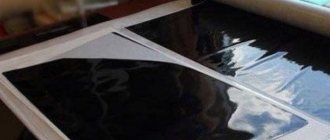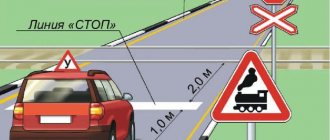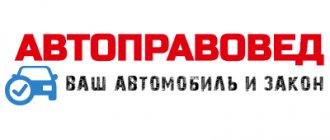The topic of illegal car window tinting is still relevant in 2021. Last spring, a bill appeared to toughen penalties for tinting glass that exceeds the norm. The deputies proposed:
- increase the fine to 1,500 rubles for committing this offense for the first time;
- introduce a new fine of 5,000 rubles for repeated fixation of illegal tinting.
How much is the fine for tinting starting in 2021? Has the new law come into force or not? What kind of tint can you use when driving abroad? You will learn the answers to these questions from our article.
Is tinting prohibited in Russia?
The issue of tinting car windows regularly becomes a topic of lively debate among both car owners and legislators.
Proponents of tinting say that darkening the windows allows you to maintain a comfortable microclimate in the car, and this is especially important in the southern regions of the country. In addition, in their opinion, tinting protects the car from being opened by intruders.
Opponents of tinted glass motivate their point of view by the fact that tinting impairs the driver’s visibility of the road and increases the risk of an accident. They also believe that cars with dark windows are often used to transport illegal goods.
Requirements for the light transmission of car windows are established in the Technical Regulations of the Customs Union TR CU 018/2011 “On the safety of wheeled vehicles” dated December 9, 2011 and in GOST 32565-2013 “National Standard of the Russian Federation. Safety glass for ground transport. General technical conditions" dated November 22, 2013 No. 2008-st.
In accordance with these documents:
- The light transmittance of the windshield must be at least 70%;
- in the upper part of the windshield it is permissible to have a light protection strip no more than 14 cm wide with any degree of darkness; for freight vehicles, buses, trolleybuses and specialized passenger vehicles, the regulation presupposes a different standard: the width of the lane should not exceed the minimum distance between the upper edge of the windshield and the upper boundary of the area where it is cleaned by the wipers;
- windshield tinting should not distort the perception of white, yellow, red, green and blue colors;
- tinting with a mirror effect is prohibited;
- There are no restrictions on rear window tinting;
That is, there is no need to talk about a complete ban on tinting. On the contrary, according to the previously valid GOST 5727-88, the level of light transmission should have been at least 75%, but now the figure has dropped to 70%.
In addition, most modern cars leave the assembly line with tinted windows, so it is very difficult to find a car with 100% transparent windows on the roads.
Who can fine and how does the procedure for measuring light transmittance take place?
Fine for losing a driver's license in 2018
A traffic police officer can issue a fine. He stops car owners who, in his opinion, are breaking the rules. Then he is obliged to carry out the procedure for measuring density using a special device - a taumeter. The work of the inspector is also controlled by GOST. To avoid getting into an unpleasant situation, you need to know your rights, namely:
- The test can be carried out with the device “Blik”, “Light”, “Blik Plus”, “Tonic” with an error of no more than 2%.
- Air temperature is from 15 to 25 degrees above zero. From this it turns out that in winter it is simply impossible to make reliable measurements.
- Air humidity is from 40 to 80 percent.
- Atmospheric pressure - from 86 to 106 kPa.
- The measuring device must have a date with a seal - checks for serviceability are carried out annually.
- The device must have identification marks.
Important! If the car owner suspects that the measurement is inaccurate, he can write an application to the traffic police for a re-check. He sets the date and time himself.
Taumeter
Traffic police and Technical Supervision officers are authorized to measure tinting. The procedure cannot be carried out at the stop site, but only at traffic police posts and stations. If a motorist is issued a fine for tinting at a stop, then it can be appealed due to non-compliance with the procedure.
What to do if the stop did not occur at a checkpoint or station, but on a section of the road? If the car owner does not agree to follow the inspector, the police officer cannot force him. According to the law, arrest can only be made upon the fact of an offense. And even completely black glass is not considered a violation until it is documented.
Another question is that the nearest posts will be immediately warned about the imminent appearance of the intruder, so it is logical to immediately remove the film or change the route.
Measurement procedure steps:
- Measurement of temperature, pressure and humidity. If the inspector does not have the appropriate instruments, then his conclusion is not an argument for filing a case in court.
- Cleaning glass. It must be clean and dry.
- The traffic police officer provides the driver with a certificate of inspection of the taumeter, as well as a certificate that the inspector can carry out measurements.
If the procedure is violated, the motorist has the right not to pay the fine and apply to the traffic police department for cancellation of the penalty, and then to the court.
What kind of front window tinting will happen in 2021?
The bill to increase fines, introduced this spring for discussion by deputies, once again did not receive support, and the punishment for tinting remained the same as it was in 2021. We would like to remind you that United Russia has repeatedly come up with a similar initiative.
In accordance with clause 3.1 of Art. 12.5 of the Code of Administrative Offenses of the Russian Federation, driving a car with windows whose light transmission does not meet the requirements of the law is an administrative offense. In this case, the fine for tinting a windshield in 2021 is 500 rubles.
Protocol under Part 3 of Art. 12.5 of the Code of Administrative Offenses of the Russian Federation can be compiled only on the basis of data obtained using a special device - a taumeter. Currently, the most common models are: “Blik” in various modifications, “Tonic”, “Light”.
The traffic police officer who carries out the measurement must have documents confirming the serviceability of the device and its certification.
Summary
2021 news regarding fines for tinting states that administrative regulations remain at the same level. For exceeding the light transmittance of car glass, the driver will be fined 500 rubles. In this case, removal from driving the vehicle is not provided.
You can find out the latest changes in Russian legislation on our company’s website, contact our lawyers or ask a question by phone. In case of controversial issues, the case can be resolved by appealing the court ruling and the inspector’s protocol. Each case is individual, so you should trust experienced lawyers who will establish the legality of the actions of all participants and help with the evidence base.
ATTENTION!
Due to recent changes in legislation, the information in this article may be out of date!
Our lawyer will advise you free of charge - write in the form below.
Penalty for re-fixing tint
Regardless of whether the first time a protocol is drawn up against you for tinting exceeding the norm or the second time, the punishment will always be the same - a fine of 500 rubles. As of 2021, Russian legislation does not have a separate, more serious penalty for repeated commission of this offense.
However, according to Part 1 of Art. 19.3 of the Code of Administrative Offenses of the Russian Federation, a traffic police officer has the right to issue an order to eliminate the offense. That is, when illegal tinting of windows is detected, along with the protocol, an order is issued regarding the need to remove the tinting within a certain period of time (usually within 1-10 days). Information about this is entered into the traffic police database.
If, having stopped the vehicle after the specified period, the inspector again fixes the tint, then a protocol is drawn up against the driver under Part 1 of Art. 19.3 of the Code of Administrative Offenses for disobedience to a lawful order or requirement of a police officer.
The protocol is being reviewed in court. The car owner faces punishment, which can be either a fine not exceeding 1,000 rubles or arrest for up to 15 days.
As judicial practice shows, “malicious” lovers of dark glasses are sent under arrest for a period of 2 to 15 days. Moreover, this trend has developed in many regions of Russia. And when an attempt is made to challenge the Supreme Court, in most cases it takes the side of law enforcement agencies and recognizes the decisions of lower courts as legal and justified.
You can avoid such punishment by removing the film from the glass in the presence of an inspector. Then the traffic police officer will record the fact that the violation has been eliminated, and information about this will be included in the road inspection database.
How to challenge a fine for tinting?
Statistics show that the majority of car owners agree with the letter of the law and understand the need to sacrifice personal preferences in favor of creating a safe situation on the roads. Insufficient light transmission is really dangerous; it makes it difficult to view the surrounding environment, especially at night. Opponents of restrictions in this matter advocate the aesthetics of tinted glass and the fact that it protects the contents of the cabin from the eyes of robbers. Another argument is the reduction in fuel consumption, since with tinting the interior does not heat up as much, which simplifies the operation of the climate control.
There are actually a lot of cars with inadequately tinted windows on domestic roads; their owners are unlikely to be able to avoid a fine, and trying to challenge the penalty if the actual light transmission of the windshield is a conditional 30% is pointless. Even if you catch a traffic police inspector violating the protocol, the court will most likely take his side and order a re-examination.
But if you are sure that you are right and know that the light transmission of your car’s glass meets the requirements, follow these steps when checking:
- check the taumeter, whether there is a seal and a certificate on it;
- make sure the inspector has determined the environmental conditions;
- make sure that light transmittance is measured at three points;
- ask the inspector to bring witnesses or film the measurement process on camera.
If there is a discrepancy in the testimony by a few percent, you will be able to seek the cancellation of the fine in court. You can appeal the punishment within 10 days from the date of receipt: it is important that we are talking about calendar days, not working days. To do this, you must contact a higher official or a higher authority (traffic police department of the district or region, court). The complaint can be filed by registered mail via Russian Post or through the office of the judicial authority. The complaint must indicate all existing violations of the protocol for determining the degree of toning of the car and provide evidence confirming your case.
Conclusion
To summarize, we can say that the penalty for tinting in 2018 has not changed - for exceeding the permissible light transmittance of glass, a fine of 500 rubles is still provided.
But if the tint is re-fixed, there is a possibility of being prosecuted under Art. 19.3 of the Code of Administrative Offenses of the Russian Federation for failure to comply with the requirements of police officers. And as a result, the punishment for tinting today may turn out to be much more serious than just 500 rubles.
Toning breeds defiance
Does everything require skill, hardening, tinting?! Photo: Denis Tyurkin / Stolitsa On March 7, amendments to the Code of Administrative Offenses of the Russian Federation came into force. Against the backdrop of rallies that swept across the country, the authorities decided to curb the ardor of those who disagreed with punitive measures. But the article of the Code of Administrative Offenses of the Russian Federation, the liability for which has been tightened, also applies to the widest category of the population - drivers. Denis Tyurkin will tell you why innovations can hit tinters especially hard.
“Uncle Volodya, tighten the screws for us!” - sing “Pornofilms”. Uncle Volodya spins it. After recent protests in Russia (uncoordinated, as officials and propagandists note), when protesters sometimes engaged in hand-to-hand combat with police officers, the legislator very quickly changed the Code of Administrative Offenses of the Russian Federation.
These amendments came into force on March 7. In particular, they tightened the liability under Article 19.3 “Disobedience to the lawful order of a police officer, military personnel, federal security service officer, state security officer, employee of bodies exercising federal state control (supervision) in the field of migration, or employee of a criminal agency or institution.” executive system or an employee of the National Guard of the Russian Federation.”
Drivers are affected by Part 1 of this article, which punishes disobedience to the order of a police officer. The most obvious case is if you disobeyed a request to stop. But since 2017, Mordovia has actively begun to punish under this article... lovers of excessive tinting. In principle, for people who know this is not news, but for those who do not know, we will clarify the mechanism.
A traffic police officer, having stopped a car that was tinted in violation, draws up administrative material under Part 3.1 of Article 12.5 of the Code of Administrative Offenses of the Russian Federation “Driving a vehicle with glass installed (including those covered with transparent colored films), the light transmission of which does not meet the requirements of the technical regulations on the safety of wheeled vehicles " The fine for this violation is a ridiculous 500 rubles, which does not stop almost anyone in the future. In addition, several years ago legislators removed the ability for traffic police officers to remove license plates from such vehicles. This has led to a sharp increase in the number of cars with excessively tinted windows.
The traffic police found a cunning way out of the situation, which seems unobvious and incorrect to many (more precisely, to the tinters themselves), but it is supported at the court level. So, if the violator refuses to fix the malfunction on the spot, that is, to rip off the tinting or remove the curtain, the inspector issues him a written request to stop the illegal actions. If the same person is then stopped again on the road with the same violation, material under Part 1 of Article 19.3 is drawn up against him.
Particularly cunning comrades are trying to avoid responsibility under this article and in court they say something like the following: after compiling the first material, I removed that tint, and this one is different. If such explanations make you laugh, then toners don’t, they read about this protection option on the Internet and think that it will work. But the court thinks differently. Here is an example from last year from the Oktyabrsky District Court of Saransk. Citizen Irek Rinatovich Slavin, who was stopped on Kosarev Street on March 12 in a tinted Opel Astra, was then caught by traffic cops again on May 7 with the same violation. In relation to him, material was compiled under Part 1 of Article 19.3. Quote from the case materials: “Argument of Slaev I.R. the fact that the film was removed within the prescribed period (March 12, 2021), and on May 7, 2021 there was already another film on the vehicle glass, has no legal significance, since this action also constitutes an administrative offense. Consequently, the police officer’s demand to stop illegal behavior by Slaev I.R. not fulfilled." Well, as a result - a fine of 1 thousand rubles.
Until March 7 of this year, the punishment under this article was as follows: a fine of 500 to 1,000 rubles or administrative arrest for up to 15 days. And now this: a fine of 2,000 to 4,000 rubles, or administrative arrest for up to 15 days, or compulsory work for a period of 40 to one hundred and 120 hours. So that's it.
Provisions of the Tinting Act 2018
The new tinting law states:
- The rear side windows can be darkened. There are no restrictions on their processing;
- you can glue the film to the rear window;
- It is also allowed to attach a transparent painted film to the top of the windshield;
- 70% is the lower limit of light transmission of the front glass.
For Russian car enthusiasts, this means the following: at the moment there are specific, legal standards, observing which you can use this type of glass processing.
